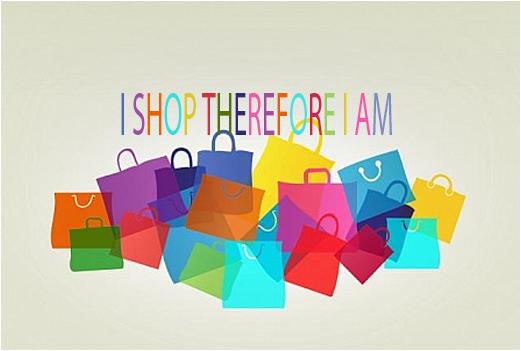I Shop, Therefore I Am

November 30, 2016
Along with the joyful spirits associated with the holidays comes the feeling of dread of hollow wallets and empty bank accounts. When looking at that to-buy list, you may feel happy to have a reason to go shopping, or you may cringe at the thought of it. But what is the psychology behind all this spending? What causes people to impulse-buy or overbuy? There are many strategies stores use to bait shoppers and manipulate consumers.
According to National Geographic’s Rebecca Rupp, many stores, especially supermarkets, tend to place the entrance and exit as far away from each other as possible to sidetrack customers, forcing them to take a look at more items while finding their way out. They also place the dairy section far from the entrance since it is such a frequently purchased product, requiring shoppers to walk around the store.
Signage has a great impact on the time customers spend in a store, which correlates to how much money they may spend. Store designers put in mirrors to slow people down as well as varieties of displays to distract them, says psychologist Adrian Furnham in Psychology Today.
The atmosphere of a store has a lot to do with how customers behave. An American Marketing Association research study found that people spent 34 percent more time shopping when there was background music playing in stores. That is why plenty of businesses, even hardware stores, play music.
Gender is a major factor in how people navigate their way through a store. Men spend less time in stores and tend to want to go in and go out as fast as possible. Furnham says, “Men move faster, look less, [and] seem to worry less about the price and seem more anxious to get out of the store.” On the other hand, women are more alert and aware. They want to ask questions and be sure of what they are spending money on.
Issac Martinez, a junior, states that he only shops when there are sales. He would rather wait to get something discounted than pay full price for it right now.
Another factor is the consumers themselves. There are instinctive things we do that affect how and what we buy. For example, according to an article in Forbes magazine, in 2012, the JC Penney CEO decided to change the store’s pricing methods, one of which was to stop having a red line run through the old price to create a new “sale” price. There are plenty of stores that use this method. But when the company instituted its “Every Day Fair and Square” pricing,
sales plummeted. This method makes shoppers think they are saving money, which causes them to buy.
There are many types of shoppers: adventure shoppers, social shoppers, retail therapy shoppers, role shoppers, and value shoppers. The most common is retail therapy shoppers because they like to shop when they are bored and have spare time, as well as to resolve emotions. People get shopper’s high — just like runner’s high, which causes dopamine to flow through your synapses, making you feel good. Because it makes us feel good we want to repeat it, which ties into addictive behavior.
This is part of why people shop so often, especially when they are feeling down. As humans, we don’t really know what to do with our leisure time, and consequently our first thought is to spend money, according to Psychology Today. (A CBS News article by Carol Kopp recommends using cash or debit cards, as opposed to credit cards, to avoid overspending or making impulse purchases while experiencing “shopper’s high.”)
Junior Tori McKinney speaks on what type of shopper she is, saying, “I don’t shop very often, probably around one to two times a month. I usually only shop when I need something, but sometimes I will go just because I’m bored.”
Overall, it is good to know about the tactics stores use to influence our shopping attitudes and decisions so we are aware of what to avoid and what to keep an eye out for, especially during the holiday season.

